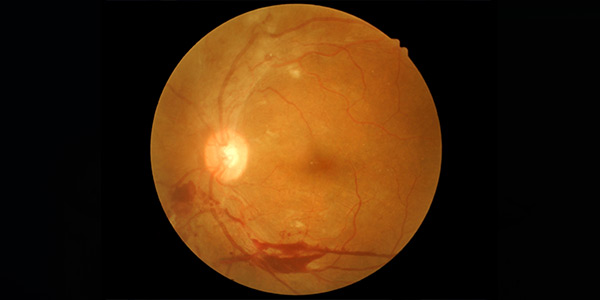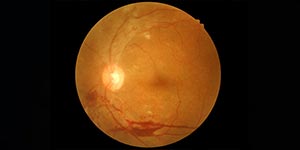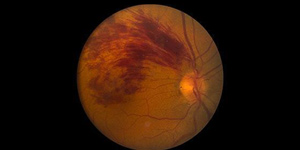Branch Retinal Vein Occlusion (BRVO) Treatment
Common questions asked by patients: How long does BRVO take to resolve? Can BRVO be cured? Is branch retinal artery occlusion an emergency? Can BRVO go away on its own?
Contact us for more information. We serve patients from Hamden CT, Norwalk CT, Trumbull CT, New Haven CT, Madison CT, Fairfield CT, Stratford CT, Northford CT, Woodbridge CT, Stamford CT, Weston CT, Bridgeport CT, Milford CT, North Haven Bridge CT, West Shore CT, Clinton CT, Guilford CT, and surrounding areas.




Branch retinal vein occlusion is a condition in which part of the venous drainage system of the retina is blocked. The retinal artery supplies blood to the retina. The blood flows through retinal arterioles, capillaries and finally through branch retinal veins that drain into the central retinal vein. A blockage in one of these branch retinal veins causes back pressure and leads to hemorrhage, exudation (leakage of fluid), and/or decreased blood flow in the area of the retina drained by that particular branch retinal vein.
A BRVO can affect the vision in a number of ways. Poor blood flow (ischemia) through the center of the retina (macula) can severely decrease the vision. Additionally, exudation and bleeding from the capillaries can cause swelling in the macula (macular edema) which also leads to visual loss. Poor blood flow can also lead to development of abnormal new vessels (neovascularization) not only in the retina but also in the front part of the eye (rubeosis iridis). These new vessels can lead to development of bleeding in the eye (vitreous hemorrhage) and/or increased eye pressure (neovascular glaucoma). Rarely, scar tissue can form on the surface of the macula causing macular pucker formation. Another rare complication is the development of retinal detachment.
Who is at risk of developing branch retinal vein occlusion?
Branch retinal vein occlusion typically occurs after the age of 50 with a peak incidence between age 50 and 70. An increased risk for development of branch retinal vein occlusion is demonstrated in individuals with a history of systemic hypertension, history of stroke or coronary artery disease, history of smoking, or a history of glaucoma. Rarely, blood clotting abnormalities, medications (e.g. birth control pills) or certain types of ocular inflammation can predispose to the development of branch retinal vein occlusion.
What is the risk to the other eye?
Almost 10% of patients with branch retinal vein occlusion develop a central retinal vein occlusion or branch retinal vein occlusion in the other eye.
How is branch retinal vein occlusion treated?
The diagnosis of branch retinal vein occlusion can easily be made on clinical examination. However, in the first three to six months following branch vein occlusion, significant retinal hemorrhages can make it difficult to predict the clinical course and visual outcome. A circulation study (fluorescein angiogram) can be performed in the office to look for areas of abnormal leakage or poor blood flow within the macula. If the macular blood flow is poor, the chances of visual improvement are more limited. Ocular coherence tomography (OCT) is also often performed to evaluate and quantify the amount of macular edema. Effective treatments are often available when the vision is reduced as a result of retinal swelling. Based on the results of the examination and testing, individualized treatment with one of a number of medication injections or laser treatment can be performed in the office.
If abnormal new vessels (neovascularization) develop, laser treatment is indicated to cause regression of these abnormal vessels. For persistent vitreous hemorrhage, retinal detachment or macular pucker formation, surgery might be necessary.

Additional Treatments You May Like

Additional Treatments You May Like
- Macular Degeneration
- Scleral Buckling
- Uveitis
- Macular Edema
- Photodynamic Therapy (PDT)
- Degenerative Myopia
- Laser Photocoagulation
- Retinal Detachment
- Diabetic Retinopathy
- Lattice Degeneration
- Pneumatic Retinopexy
- OCT
- BRVO
- Inherited Retinal Disorders
- Macular Hole
- Flashes and Floaters
- Macular Pucker
- Angiography
- CRVO
- Cryotherapy
- Retinal Artery Occlusion
- Intravenous Fluorescein Angiogram
- Retinal Tear
- Vitrectomy
- AMD
- Intravitreal Injections
- Complications After Cataract Surgery
- CSCR
- Pars Plana Vitrectomy




